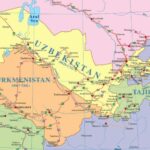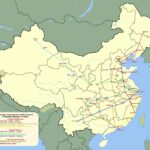Chinese investments in Africa have attracted more attention then other world areas activities of China, but it’s really a dangerous strategy for Western World? In this paper we will examine again on geopolitical basis this situation. Africa was well known to Chinese exploration of the world with merchant and military fleet from 200 b.C to admiral Zheng He around 1400 a.C., which was along East Africa in present Ethiopia and Sudan. After 1500 Confucian bureaucracy prohibited these far explorations, considered not interesting for China empire. Pacific Ocean has been also considered too vaste and not useful for China interests. The present 25 years planning of communist China develops investments in infrastructures in all the world. Until now they invested around 2 trillion $ in the last twenty years, mainly targeting Europe and USA, but also Asia, Africa and South America. Main objectives have been:
- energy sources, being China poor of energy resource excluding coal;
- technology and knowledge sources;
- multinational business, as Japan was doing in eighties as assurance in international competition investing in USA ;
- political stability preserving advantages coming to China from globalization processes.
The investment policy is very balanced and adjusted to local GDP and strategical vision of relationships with USA. African investments are around 25/30 billion $ for each of Eastern and Central countries, providing new cities for future Chinese workers in Congo, new railways in Ethiopia from Addis Abeba to the only foreign military basis of china Army in Djibouti, new enormous harbor in Tanzania, where a fishermen village and the coast will become a new Shenzhen, within the road and belt international project, African side. Also Angola and Mozambico have been involved for their crude oil reserves. So about 300 billion $ have been poured in these African states, not disturbing French influence area on Central West and USA influence area in South Africa.
These figures must be compared to very similar ones for each European country, with Italy at 25 billion $, except the 85 billion$ amount for UK. In South America also we find similar amount of investments, mainly in Brazil with 65 billion $, but with similar figures in Venezuela, Argentina, Perù. In Asia the main concentration is in Australia with 65 billion $ and 30/40 billions for other South Asia countries. In Russian Federation due to Obama policy of pushing Russia to China, investments are more then 120 billions $.So when Xi talks in favor of globalization we can better understand why, securing all the lines of energy sourcing and all the markets for exports, with the admiral Spike maritime ring approach imitated from UK and USA strategies for their empires.
So around 1 trillion $ have been invested in Africa, Asia and South America and another trillion in Europe and USA. Of course speaking of Africa everyone remembers colonization from Europe and slavery to USA, but here the vision is more ambitious regarding world market and apparently motivations can be more open to partnership, at least theoretically. As Lenin was recommending to learn from praxis, many of these big infrastructures building have created some disappointing relationships on the ground with African people, not always managed properly in the work or due to emerging of radicated racial arrogance in Chinese technicians.Recently speaking in Riga to a class of Indian engineers, they were referring of similar situation in Southern Asia countries. Of course when you re rich and your money commands, you become sometimes arrogant, and also these are old roots in Chinese empire culture.
Hong Kong facts may become the Hungarian 1956 case for URSS imploding? Maybe, but for the moment Chinese Government renovates its long term investments plan to keep more stability as possible to its economic growth and to allow more internal consumption in its mainland. The USA attacks to globalization are also a sign of American difficulties in keeping on the scientifical/technological and business challenge dividing again the world in two dominions, not so physically determined as during the cool war, but interconnected, virtual and space diffused as the contemporary world is.




